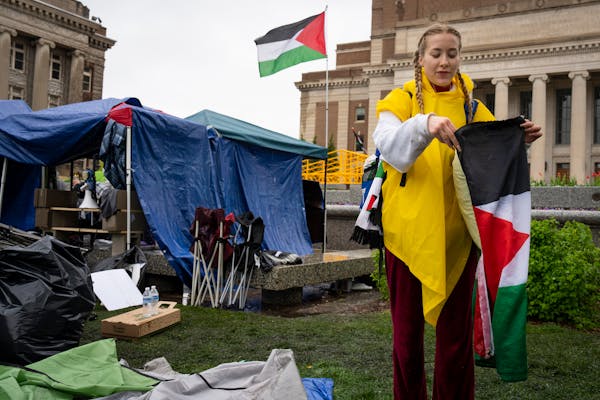Commentary
It took me a good 30 years to realize it, but I don't look at protests the same way as most people.
As a very young child, I participated in civil-rights protests in Chicago, where my mother was one of the organizers.
It wasn't the South, but it was, I now know, dangerous, with no guarantee that our code of nonviolence would be shared by the police or anyone else.
"Are you scared?" I remember a reporter asking me, 6 years old at the time, during a 1963 sit-in at the Chicago Board of Education building.
"No," I replied -- thinking the question inane: My older brother was a few feet away, playing chess with someone else I knew.
My mother was in the room, laughing one moment and strategizing the next. My foster sister, Sibylle, was there, too -- and a newspaper photographer insisted on setting up a shot of her cradling me on the floor, which I resisted, not wanting to look like a baby.
It ran in the paper the next day, and I looked like a baby -- my only negative memory of the sit-in.
When it ended, our family outing the next week probably would have been to the Museum of Science and Industry or a Grant Park concert.
If I have fond memories of protests -- only years later understanding the risks and that there were no assurances that our side, no matter how right, would win -- others saw us as troublemakers.
Not just those who opposed us but many who shared our ideology.
Some had other ways of effecting change -- through the courts or by adding to the din of public opinion, or just by staying out of the way if they couldn't remain nonviolent.
And though ours was a moral struggle -- against racial discrimination -- fundamental also was to love our opponents, and even oppressors, that we might one day win them over.
Largely, it worked. At the least, it's unpopular today to blatantly call yourself a racist.
Yet it's also true that not everyone who employed our tactics shared our sense of right and wrong.
One who famously adopted nonviolence in defense of segregation was Albany, Ga., Police Chief Laurie Pritchett, who studied the methods of the Rev. Martin Luther King Jr. in advance of a 1961 protest in his city.
Pritchett ordered his officers not to manhandle the protesters and cleared out jails within a 100-mile radius to absorb an endless number of protesters. King's side collapsed, and he left town.
If nonviolence knows no ideology (and it would be truly wonderful if that were more frequently so; imagine nonviolent wars), then neither does protest.
The throngs in Tunisia, Egypt, Bahrain, Libya and elsewhere in the Middle East may be more united in what they are against than what they are for or what will come, and no one knows yet what that will be.
If stateside protests since the 1960s are more frequently identified with the left, then what to make of the handful of right-wing ralliers who gathered around the country to complain about taxes on April 15, 2009?
Ridicule them, as many did?
No one is laughing at the relevance or numbers of the Tea Party movement today.
And what of the fact that the thousands who for most of a week had been exercising the right to petition for redress from the Wisconsin government eventually were met by others supporting it?
There is another reason we protest: It's often fun. Camaraderie, the feeling of being a part of something bigger, more important than we are individually, can consume our being.
omances even ensue, and romantic tales of heroism and daring, like the Wisconsin protesters Thursday who hung a banner on the Capitol dome, saying "Run, Dems, Run."
(For or against the 14 state senators who had gone into hiding to prevent a quorum? I couldn't tell.)
Half a century ago in Chicago, authorities locked the doors in an attempt to separate our sit-in group from our supporters outside and starve us out.
Sibylle responded by climbing out a window onto a telephone pole, throwing down television film for an airlift of hamburgers.
A fond memory of my youth.
Robin Washington is editor of the Duluth News Tribune. He may be reached at rwashington@duluthnews.com. This article was distributed by McClatchy-Tribune Information Services.
![There are "over a million tons [of PFAS] produced globally each year," Ali Ling writes. "That’s enough to contaminate the volume of all oceans on ea](https://arc.stimg.co/startribunemedia/KXZZJHFD37YQDWIQAKWDM235DY.jpg?h=91&w=145&fit=crop&bg=999&crop=faces)
We should mitigate PFAS at the source
Bolster safeguards after cyberattack


